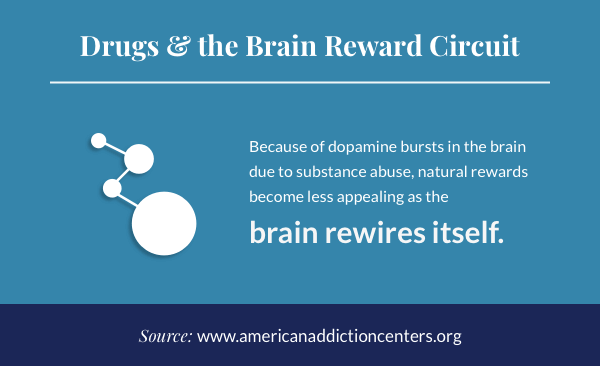A Biased View of What Does God Say About Drug Addiction
Screening and assessment are used to make 2 important choices: Is the private stable sufficient to stay in an outpatient setting, or is more intense care showed, calling for quick referral to an appropriate alternative treatment?What services will the customer need?To answer either question, personnel needs to initially identify the scope of the customer's problems, including his physical and psychological status, living circumstance, and the assistance he has offered to deal with these problems.
An extensive evaluation needs to establish the customer's mental and physical status. The process should figure out any pre-existing medical conditions or problems, substance usage history, level of cognitive performance, prescription drug requirements, present psychological status, and mental health history. A central intake team is a helpful approach to screening and evaluation, offering a typical point of entry for many customers getting in treatment.
At Arapahoe House (a design explained later in this chapter), the information and access team handles numerous phone conversation weekly, performs screenings, and sets consultations for admission to any of the programs within the company, with the exception of three detoxification programs. Where centralized consumption serves a multi-modality treatment organization or a community with several settings (the latter being especially tough), the intake procedure can be used to refer customers to the treatment technique most suitable to their needs (e.
When admitted to treatment, clients need regular reassessment as decreases in intense signs of mental distress and drug abuse may speed up other changes. Regular assessment will offer measures of client change and allow the supplier to change service plans as the client advances through treatment. Mindful assessment will assist to recognize those clients who need more safe and secure inpatient treatment settings (e.

SUGGESTION 29, Substance Usage Condition Treatment for People With Physical and Cognitive Disabilities (CSAT 1998e ), contains information on evaluating physical and cognitive working that is appropriate for all populations. It is essential to see the client's positioning in outpatient care in the context of connection of care and the network of offered service providers and programs.
Preferably, a complete range of outpatient substance abuse treatment programs would consist of interventions for unmotivated, disaffiliated clients with COD, in addition to for those seeking abstinence-based main treatments and those needing continuity of supports to sustain healing. Similarly, ideal outpatient programs will assist in access to services through fast action to all agency and self-referral contacts, imposing couple of exclusionary requirements, and using some client/treatment matching criteria to guarantee that all recommendations can be participated in some level of treatment.
5 Simple Techniques For How To Find Suboxone Treatment For Opiod Addiction In Portsmouth Va
The consensus panel has actually pointed out that treatment providers should take care not to put clients in a higher level of care (i. e., more intense) than is necessary. A customer who might stay taken part in a less intense treatment environment might leave in response to the demands of a more intense treatment program.
By offering continuous outreach, engagement, direct help with instant life problems (e. g., housing), advocacy, and close tracking of private needs, the Assertive Neighborhood Treatment (ACT) and Intensive Case Management (ICM) models (explained listed below) provide techniques that make it possible for clients to gain access to services and foster the advancement of treatment relationships. In the absence of such assistances, those people with COD who are not yet all set for abstinence-oriented treatment might not abide by the treatment plan and may be at high risk for dropout (Drake and Mueser 2000) - how many people are seek treatment for methamphetamine addiction.
Daley and Zuckoff (1998 ) note a variety of useful techniques for improving engagement and adherence with this population. Use telephone or mail reminders. Supply reinforcement for presence (e. g., snacks, lunch, or repayment for transportation). Increase the frequency and strength of the outpatient services provided. Develop more detailed cooperation between referring personnel and the outpatient program's staff.
Have actually outpatient programs created particularly for clients with COD. Supply clients with case supervisors who participate in outreach and provide home sees. Coordinate treatment and tracking with other systems of care providing services to the same client. Release preparation is essential to maintain gains achieved through outpatient care. Clients with COD leaving an outpatient drug abuse treatment program have a number of continuing care alternatives.
A carefully developed discharge strategy, produced in partnership follow this link with the client, will identify and match client needs with community resources, supplying the supports needed to sustain the progress achieved in outpatient click here treatment. Customers with COD often require a variety of services besides drug abuse treatment and psychological health services. Generally, popular needs consist of real estate and case management services to develop access to community health and social services.
Without a location to live and some degree of economic stability, clients with COD are likely to go back to compound abuse or experience a return of signs of mental illness. Every drug abuse treatment company must have, and numerous do have, the strongest possible linkages with community resources that can help attend to these and other customer needs.
All About What Are The Overall Success Rates For Addiction Treatment
It is imperative that discharge preparation for the client with COD makes sure connection of psychiatric evaluation and medication management, without which customer stability and recovery will be badly compromised. Relapse avoidance interventions after outpatient treatment need to be modified so that the client can acknowledge signs of psychiatric or compound abuse regression on her own and can contact a found out collection of symptom management strategies (e - how opioid treatment in the hospital can lead to addiction with chronic pain.

This also consists of the ability to gain access to assessment services rapidly, considering that the return of psychiatric signs can often set off drug abuse relapse. Developing favorable peer networks is another important aspect of discharge preparation for continuing care. The company looks for to establish a support network for the client that involves family, community, recovery groups, buddies, and loved ones.
Programs also should motivate client participation in mutual self-help groups, especially those that focus on COD (e. g., dual healing shared self-help programs). These groups can offer a continuing supportive network for Substance Abuse Facility the customer, who normally can continue to get involved in such programs even if he relocates to a different community.
The consensus panel likewise advises that programs dealing with customers with COD try to involve advocacy groups in program activities. These groups can help customers become supporters themselves, advancing the development and responsiveness of the treatment program while boosting clients' sense of self-confidence and supplying a source of association. Continuing care and regression prevention are especially important with this population, given that individuals with COD are experiencing two long-term conditions (i.
